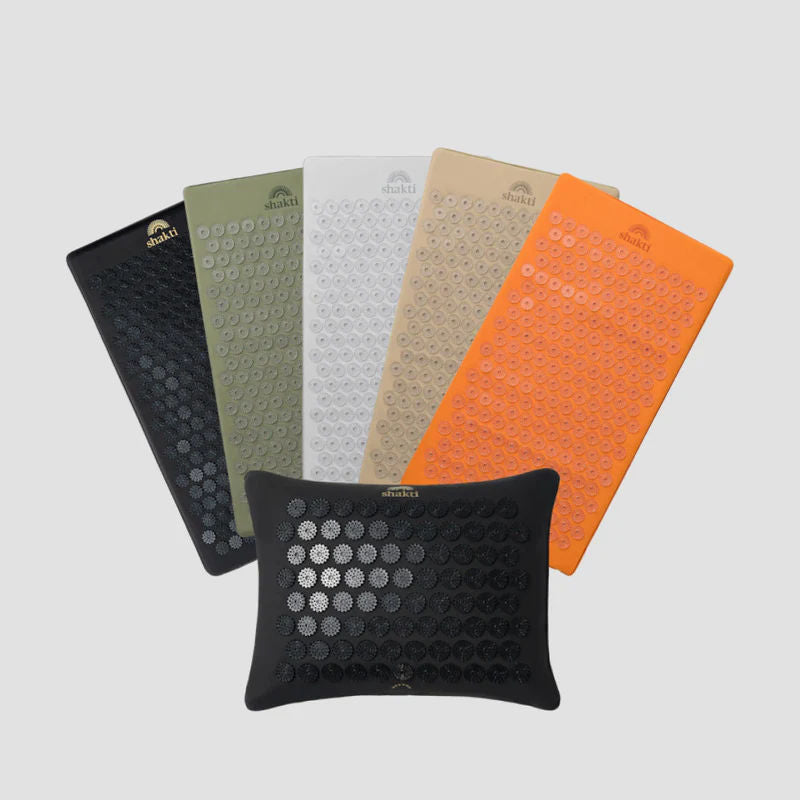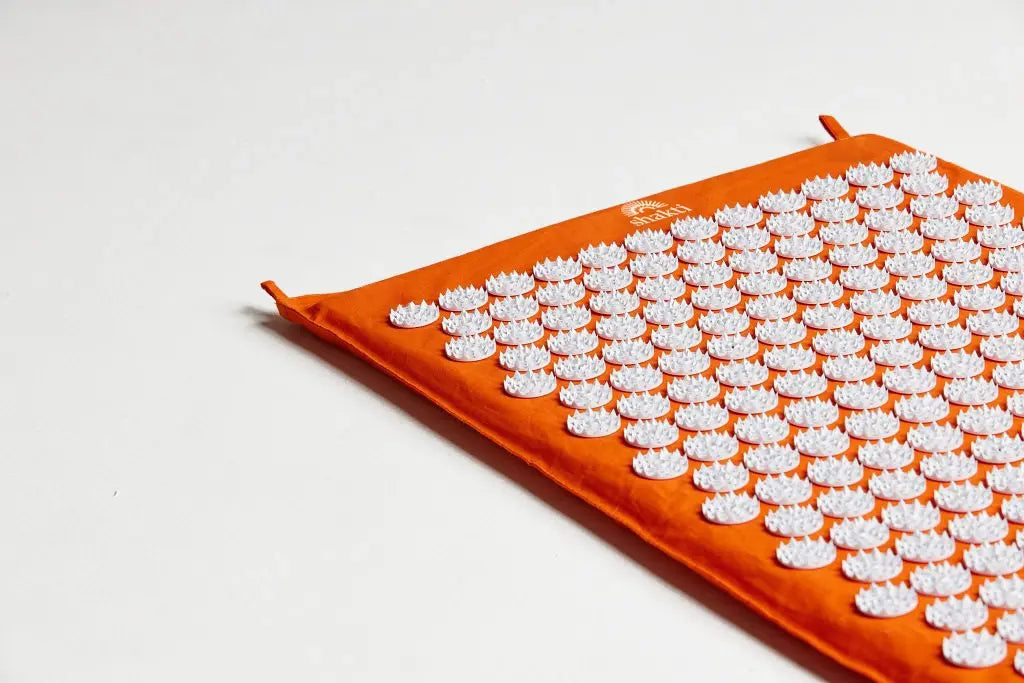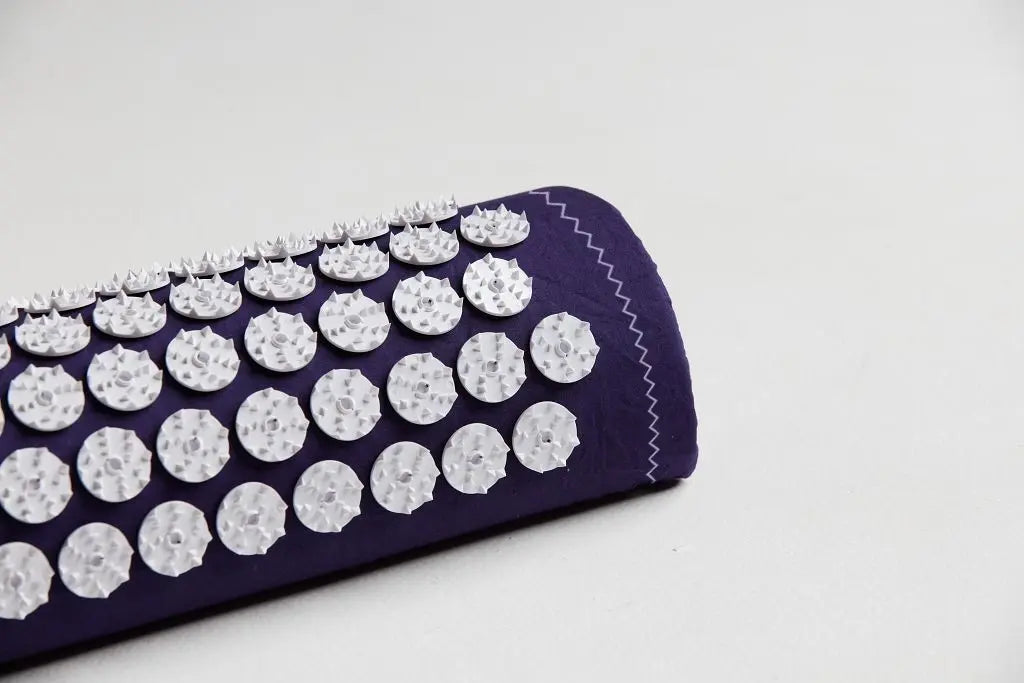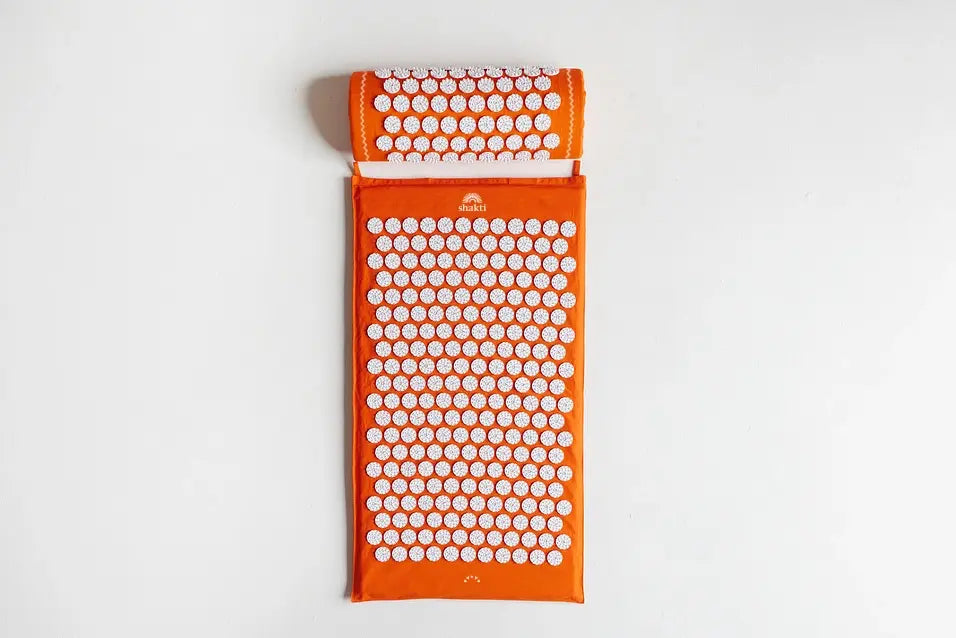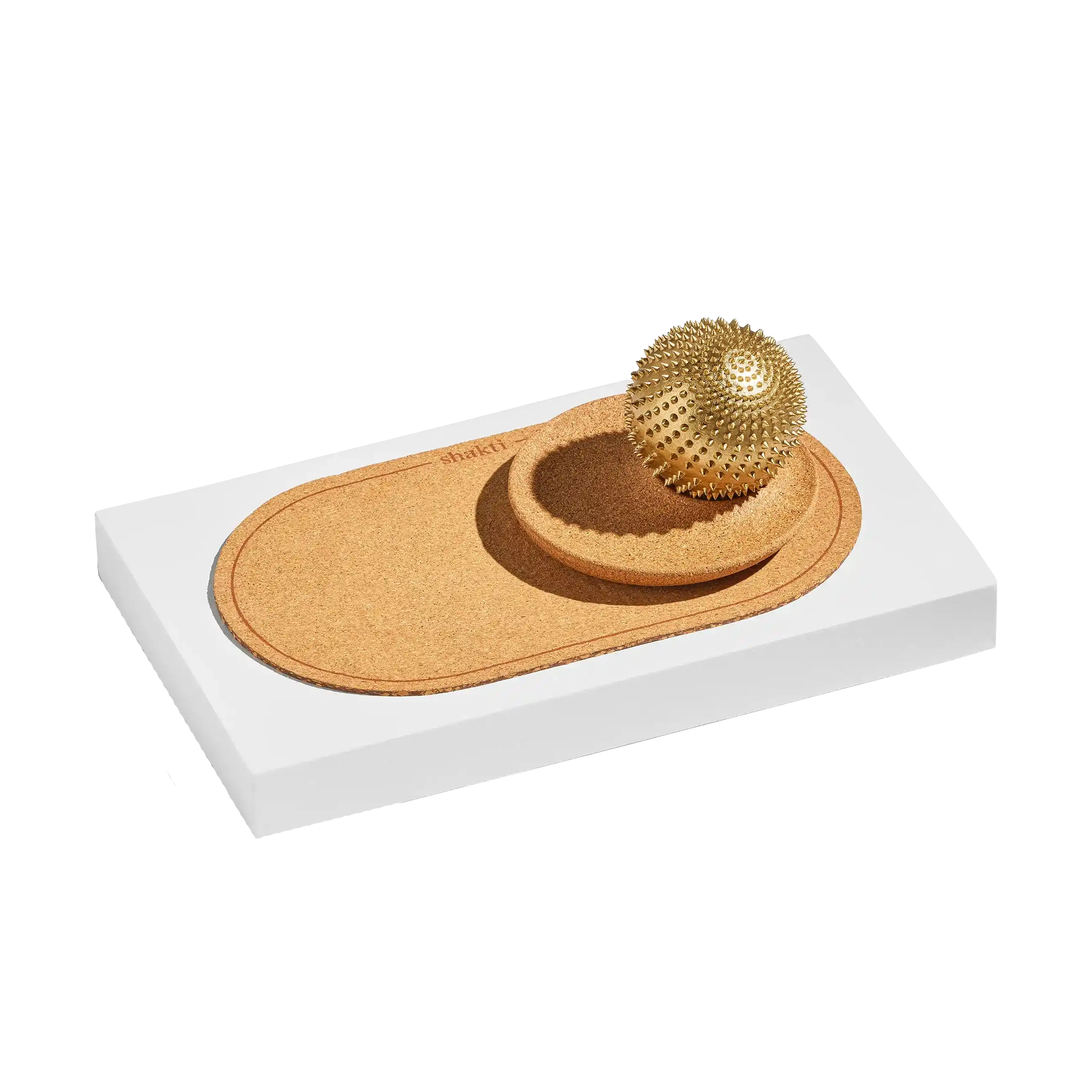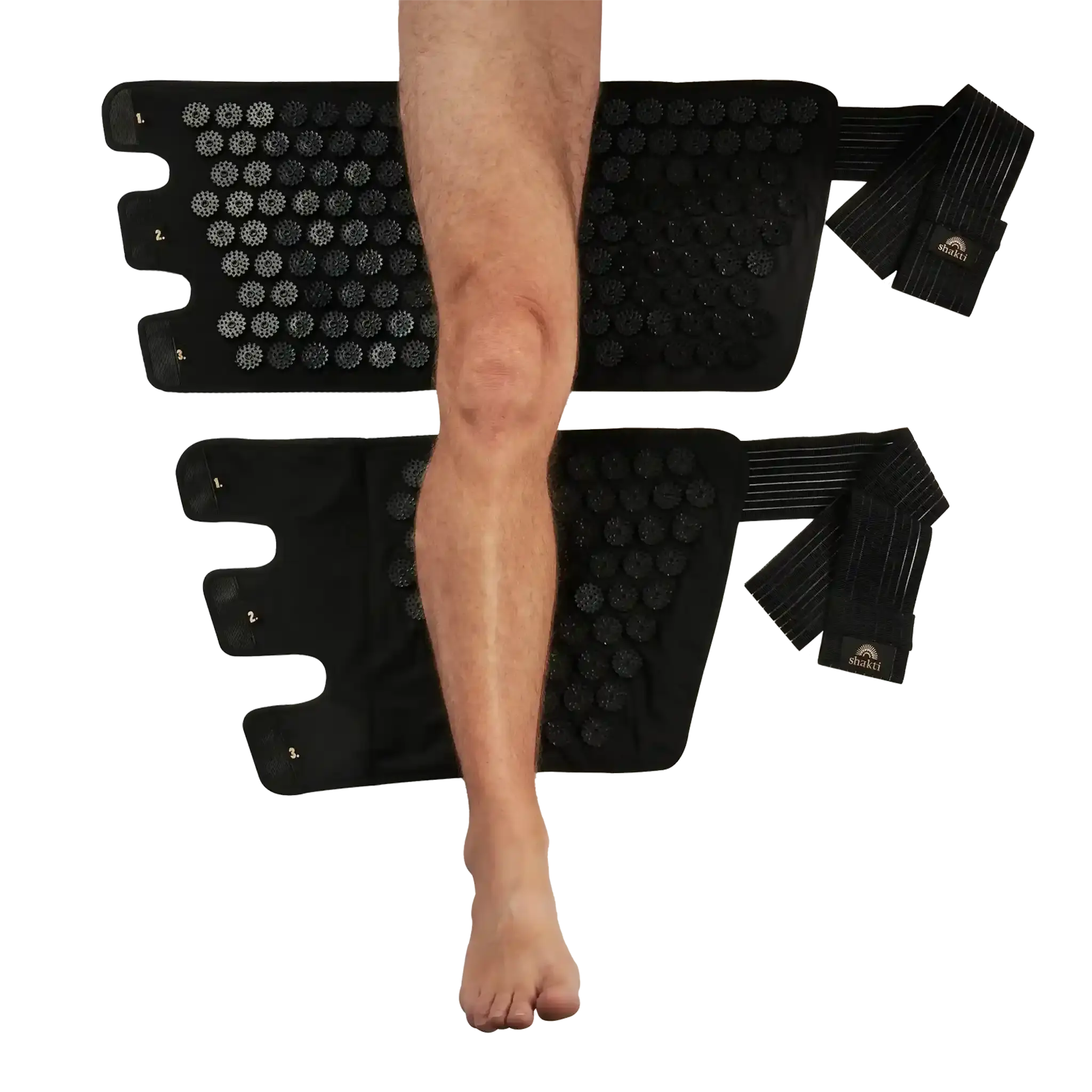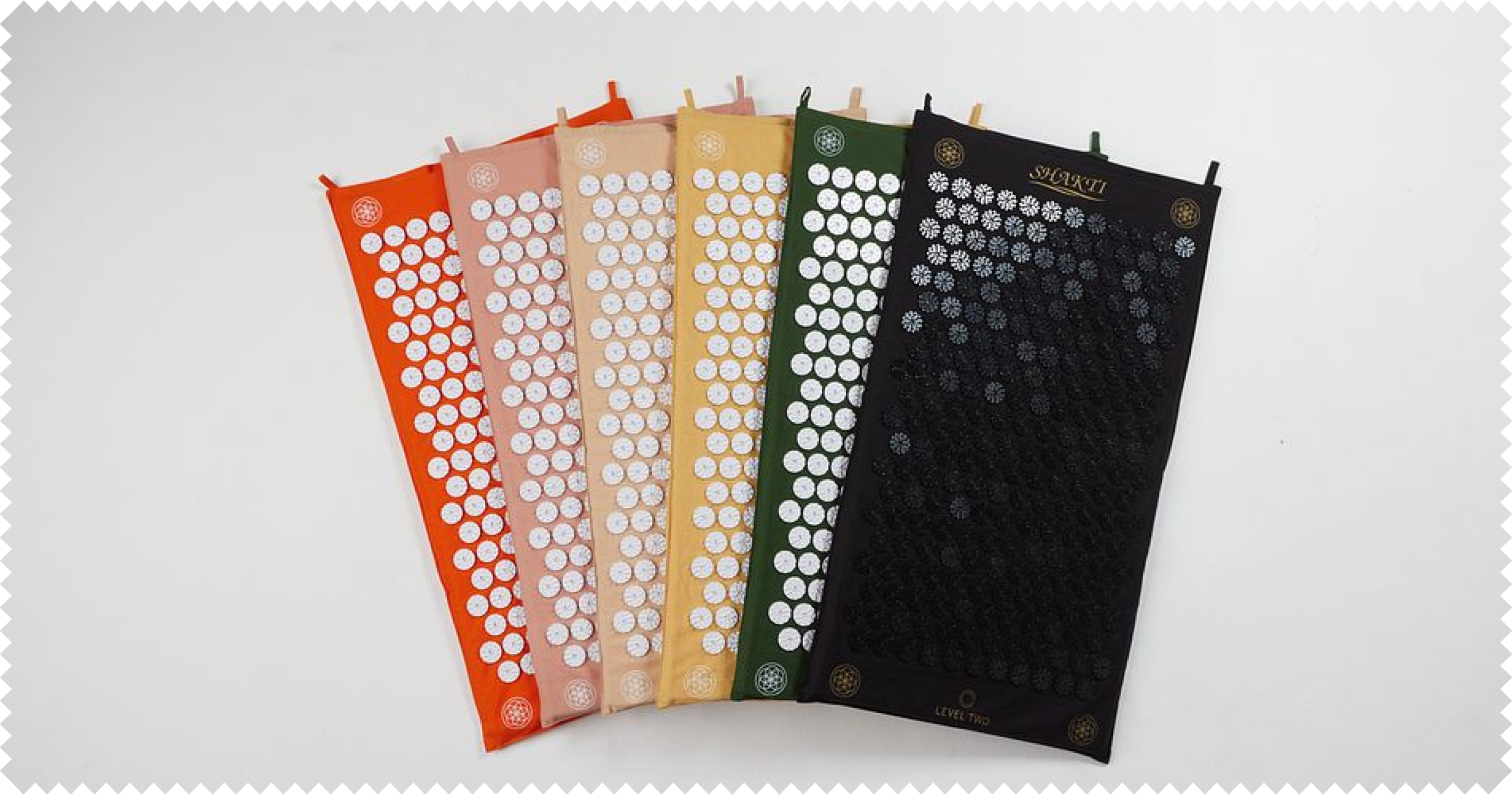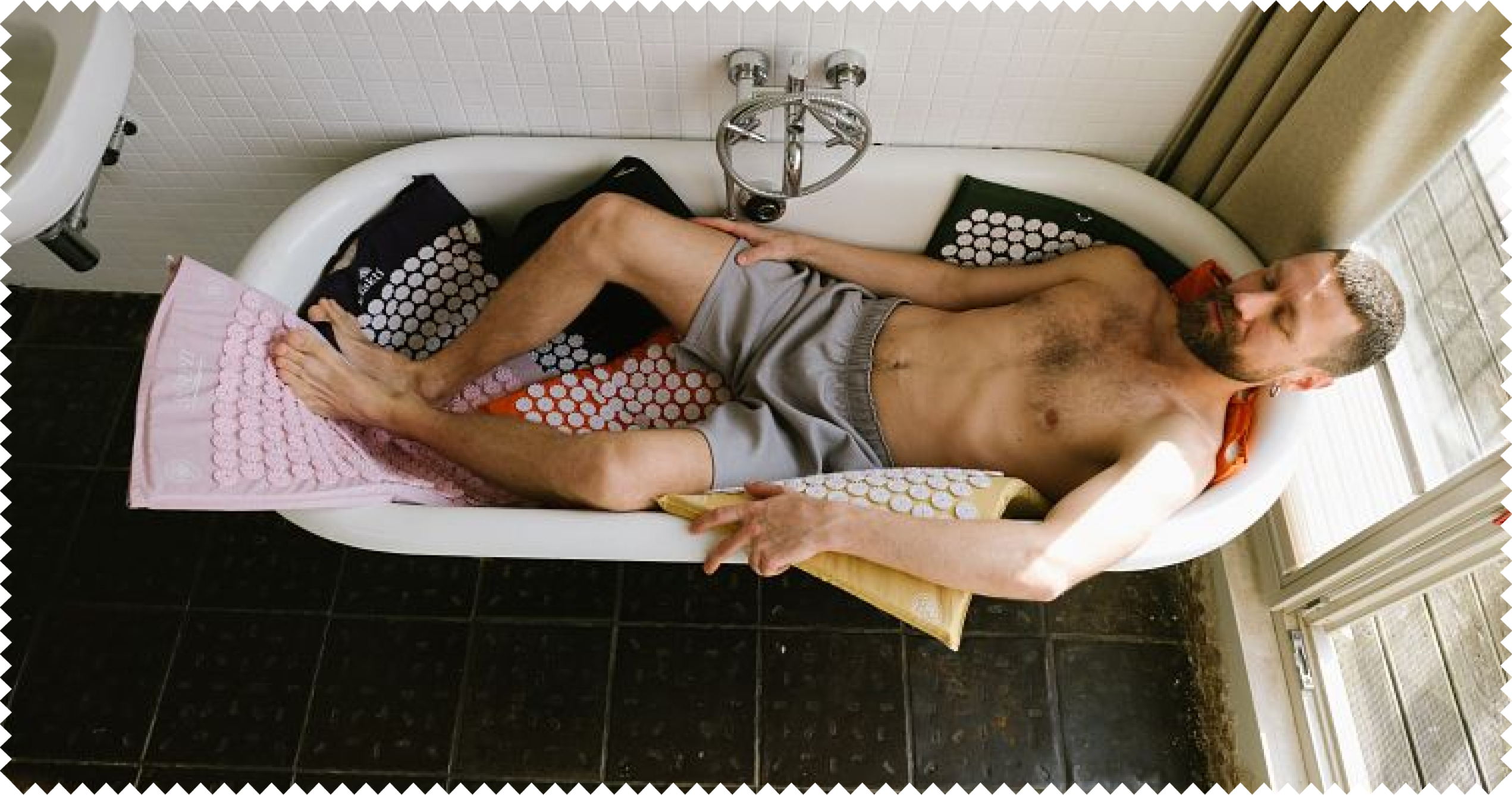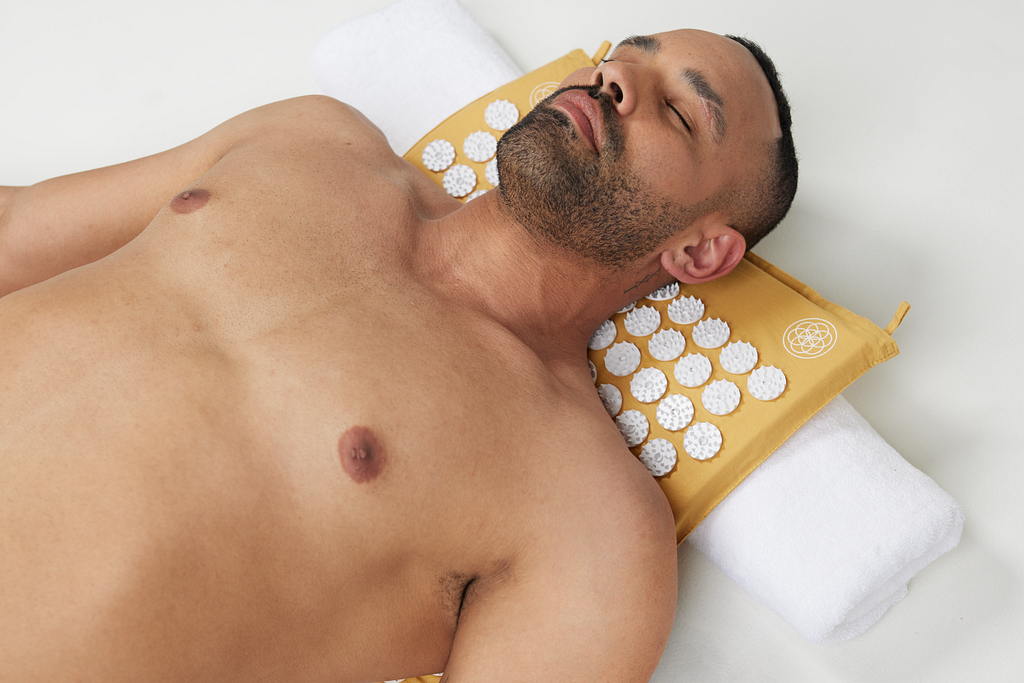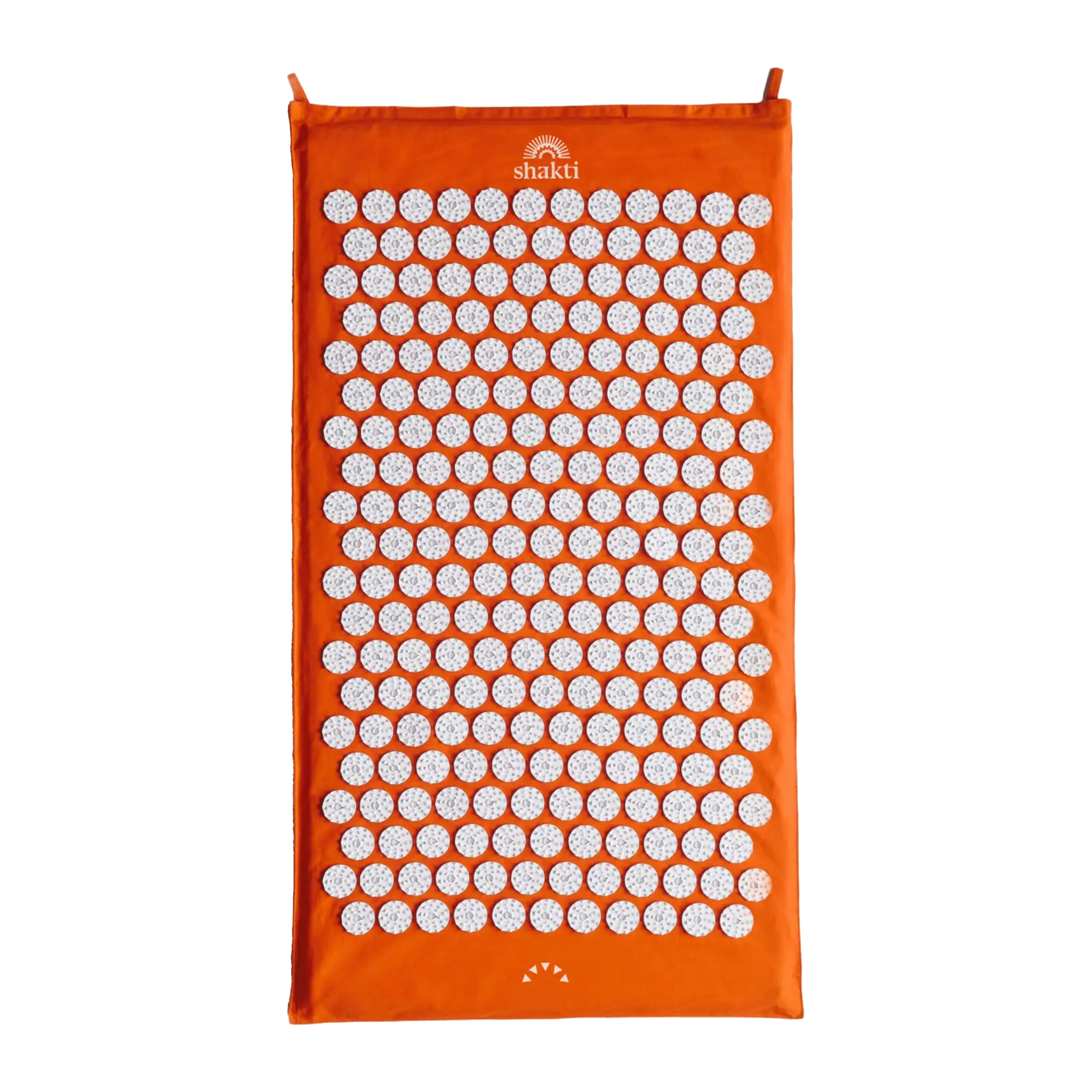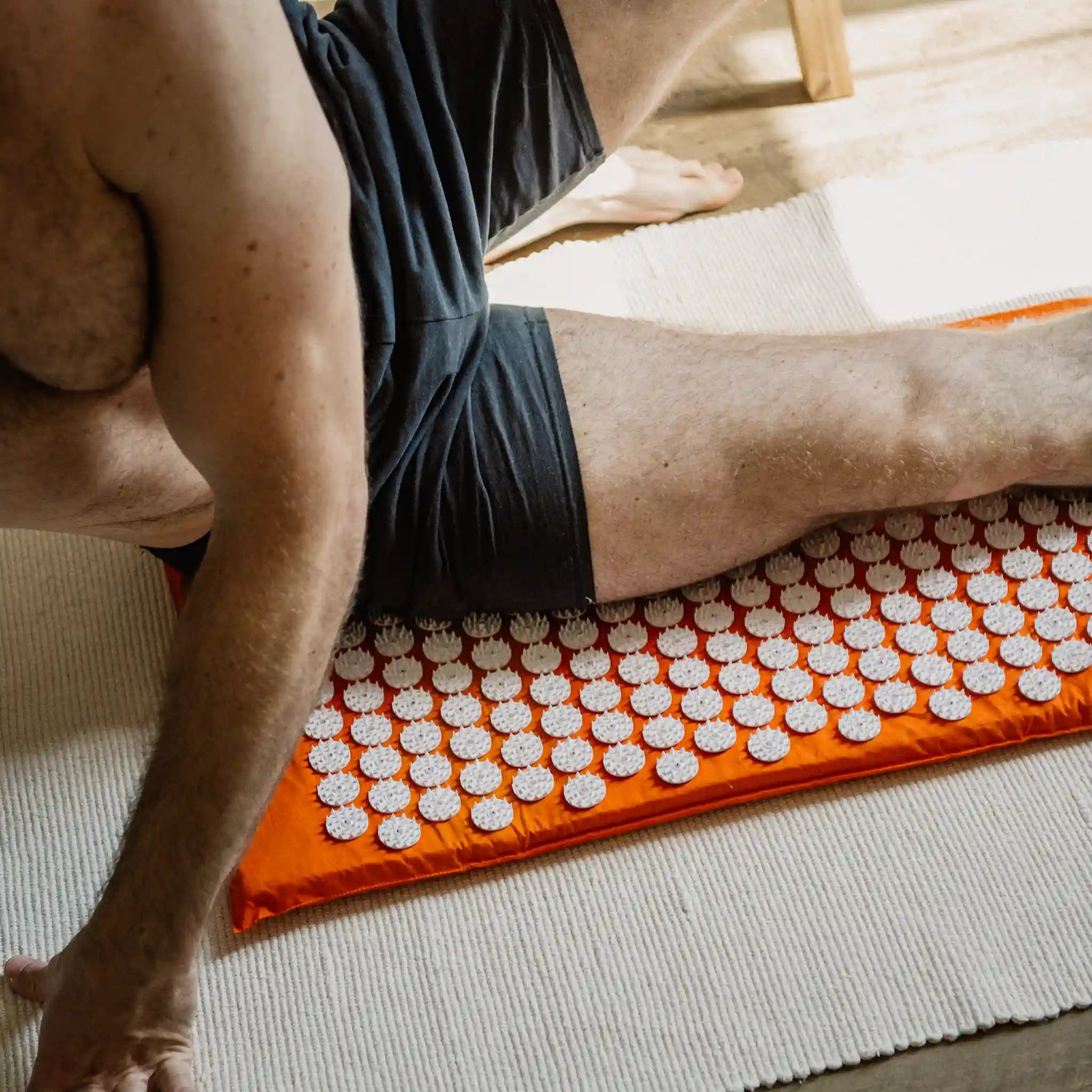- The upper back - understanding structure, composition & pain
- Tension in the upper back: This is behind the pain
- Release tension in the upper back - our tips
- Acupressure for tension in the upper back
- Upper left back pain & upper right back pain - putting an end to the pain
If you suffer from tension in your upper back, you'll know what that sharp pain feels like every time you move or inhale. Back pain is a common anomaly that's almost naturalized as a common ailment. But that doesn't mean you have to put up with it. There are a few different ways you can relieve tension in your upper back and find quick relief. In this article, we explain the possible causes of your back pain and show you how to get your upper back muscles back under control thanks to a few great tips & tricks.
The upper back - understanding structure, composition & pain
Before we delve deeper into the topic of relieving tension in the upper back, we would first like to give you a little insight into the anatomy of your back. This should help you to understand where back pain actually comes from and which parts of your back muscles are affected.
Think of your spine as a tree trunk. It ensures that you stand upright. It connects parts of your skeleton and thus carries the weight of your entire upper body. To carry this heavy load, the upper back is therefore supported by several muscle groups. It basically includes the muscles used in straightening and raising the arm, as well as those involved in supporting the upper body. These include the trapezius muscles, the scapulae, the latissimus dorsi and the rhomboid muscle. The rhomboid muscle is predominantly important for the entirety of the upper back, while the trapezius muscle and latissimus dorsi are primarily responsible for back mobility and shoulder strength.
These muscles work together to keep your shoulders in a normal position, support your spine in a stable position, and improve your range of motion.
Tension in the upper back: This is behind the pain
When it comes to treating upper back pain, it is very important to understand the cause of the muscle tension. These can originate on both an emotional and physical level. It is therefore essential that you take the time to ask yourself which of the following reasons have been relevant to you over the last few days or weeks:
- Static strain: Static strain is a common cause of tension in the upper back. Long, immobile movements at work, hobbies or sport can cause the muscles to become tense and shortened and even lead to chronic pain in the long term.
- Poor posture: Poor posture when sitting, standing or lying down can also cause muscle cramps and tension. Especially if you spend all day at your desk or on your cell phone, your back will suffer greatly.
- Emotional strain: Stress and anxiety can also have a negative impact on the body. When we are too stressed, anxious or tense, our shoulders and neck can tense up - a common trigger for upper back tension.
- Unhealthy diet: Deficiencies caused by an unbalanced diet can also have a negative effect on the musculoskeletal system and thus be the cause of pain and tension in the upper back.
- Lack of movement: When we don't move much for long periods of time, our muscles become weak and shortened. Our body needs regular exercise to keep the musculoskeletal system going and prevent muscle tension.
The imbalance - so much it affects upper back pain
One of the most common causes of upper back pain is muscular imbalances caused by one-sided movement or strain. Tension in the upper back can be caused by a variety of factors, including poor posture, lifting heavy objects, prolonged periods of sitting and even a lack of exercise. Furthermore, muscular imbalances can also play a role in the development of such pain. Such an imbalance occurs when individual muscles in one region of the body are not as strong as those in another. An example of this is an imbalance between the muscles that flex the upper back versus the muscles that extend the upper back. Excessive pressure on a muscle, as is the case with an imbalanced upper back musculature, can lead to a hardening of the muscle. Since muscles are constantly under tension, the hardness of the muscles can develop into back pain and tension.
Release tension in the upper back - our tips
Now that you know that back pain is usually caused by soft tissue injuries such as sprains, strains, or muscle strains, it's time to address the problem. Because with the right steps to prevent and resolve back pain and upper back tension, you can quickly focus on the finer things in life. Here are 7 ways to relieve upper back pain:
Stretch for the upper back
If you can now release tension it is helpful to get to know your body better and get it to relax. You can do this by stretching the muscles in your upper back. Sit down comfortably and take a few deep, conscious breaths. Then you can start to guide your muscles through a few stretching sequences. Exercises for the upper back include moving your shoulders back and forth a few times, slowly turning your head left and right or doing some gentle, slow back stretches. For a good stretch, add in a torso twist, an overhead arm pull, the cat-cow pose or the simple child's pose. Stretching allows you to recover the muscles that stabilize your upper back and restore a healthy balance in your muscles. You can also specifically prevent back pain in this way.
Acupuncture for the upper back
Acupuncture is one of the oldest human healing modalities and has a long history of successfully treating chronic pain. During treatment, thin needles are placed on the various energy channels of your body to promote energy flow. Acupuncture treatment can do a lot to relieve tension in the upper back. It attempts to stimulate the flow of energy at specific points to relax the muscle. It can also help treat broken bones or other serious injuries in the back, although it is important to consult a doctor in such cases.
Electrical muscle stimulation against tension
A complementary treatment to acupuncture is electrical muscle stimulation (EMS), which uses micro-pulses to target your muscle fibers. EMS is a technique that sends mild electrical pulses to muscles to loosen them and reduce cramping. The irritated muscles are then supplied with blood and nutrients by the body, which supports their health and flexibility. EMS can help relieve cramps in a matter of minutes and is also ideal for people who have trouble sleeping, as it helps relax muscles as you fall asleep. It is a safe and effective treatment and in many cases can help naturally relieve upper back and chest pain.
Massages to relieve muscle tension in the upper back
Massage is an ancient healing method that has been used for thousands of years to relieve physical ailments - including back pain. An upper back massage has the potential to relax back muscles and prevent tension from persisting. There are several types of massages you can consider to treat upper back tension. One of them is tapping massage, which aims to loosen the muscles to promote blood flow and relax the muscles. Especially if you feel a pinpoint pain next to the spine in the upper back, this type of massage can work specifically on the affected area.
Another well-known method is shiatsu massage, which is used for healing purposes in Japan. This type of massage applies pressure and friction to the affected areas to loosen knots in the tissues and stimulate circulation. While massage can be a very effective treatment for back tension, you should always consult an experienced massage therapist to receive proper treatment.
Rediscover swimming or water gymnastics for the back
Swimming and water gymnastics are two proven methods that can help relieve tension in the upper back while contributing to more freedom of movement in everyday life. The two water sports are a gentle way of physiotherapy, as they strengthen the muscles and prove to be a suitable strategy to relieve tension in the upper back. This is due to the water pressure, which offers a relaxing and healing effect on tense muscles and gently numbs the nerves. Swimming also helps strengthen joints without having to engage in painful and physical exercises. So, the two methods are not only considered a good stretch, but also support you to train your upper back in a sustainable way.
Yoga or Pilates to strengthen the upper back
Yoga and Pilates are two reliable and effective options to treat upper back pain and tension. Both methods affect the body, psychological well-being, and the cardiovascular system. While yoga originated as a spiritual-religious practice in India, Pilates is based on the idea of steady, resistance-based exercise. Both systems have a historically strong foundation that allows a person to stretch and strengthen the body through specific exercises.
Yoga promises not only increased flexibility and reduced risk of injury. It can also help to relax and improve muscle strength in the upper back. This includes stretching, which is initially a part of every yoga session. This involves basic and specific exercises that help loosen your upper back muscles. Just like yoga, Pilates is an endless source of dynamic and powerful back exercises that stretch your muscles, increase your flexibility and improve your posture. So even upper back, shoulder and neck pain can be targeted.
Also remember: Reduce stress for your back
First of all, it is important to understand that stress and tension are closely linked. Under stress, we often become tense, while tension can lead to even more stress. It is therefore important that we develop strategies to reduce stress levels and therefore pain. A first step is to become aware of when you feel stress. This allows you to tackle the root of the problem and avoid further upper back pain. Finally relaxation techniques such as progressive muscle relaxation, autogenic training or meditation can help to reduce your stress levels and release the tension.
It's also important to make sure you get enough sleep. Not only can a lack of sleep affect your wellbeing, but it can also lead to bad habits and make you fundamentally more susceptible to stress and pain. If you're struggling with stress, it's also important that you get enough exercise. A walk in the fresh air will help you clear your head and allow tense muscles to relax. A good acupressure can also help to treat upper back pain caused by stress.
Acupressure for tension in the upper back
Acupressure is a proven technique that originated in traditional Chinese medicine. It is based on the concept of the flow of life through the body, also known as Qi, and has been used successfully for centuries to relieve a variety of symptoms. By gently stimulating specific pressure points, tension and pain in the upper back can be relieved, restoring mobility.
It is not uncommon for tension to develop in the upper back, especially when a lot of time is spent in front of a computer. Symptoms that can occur include sharp pains when moving, tight muscles in the neck and shoulder area, and increased fatigue. Acupressure can relieve these symptoms because stimulating the pressure points improves the flow of qi to the affected area, stimulating the flow of energy and relieving tension in the upper back.
The acupressure mat - Against pain in the upper back
An acupressure mat is a very effective and simple solution to provide targeted support for your body in case of pain. It can help to relieve tension in your upper back and restore comfort and mobility. The acupressure mat, also known as an acupressure cushion, consists of hundreds of tiny, differently shaped plastic needles arranged evenly on a soft mat. When you lie down with your affected area on the mat, the needles gently drill into the skin and stimulate blood circulation and nerves. This can have a therapeutic effect, relieving pain and releasing tension in the upper back.
It is important to understand that acupressure for back pain is not a quick cure; however, it can help relieve symptoms and loosen muscles. In addition, we recommend that you also include physical training, regular massage and good nutrition in your daily routine to optimize results.
Upper left back pain & upper right back pain - putting an end to the pain
If you suffer from upper back pain, this situation doesn't have to feel hopeless right away. There are many ways to alleviate this type of discomfort and find relief quickly. A combination of exercise, stretching, relaxation exercises and self-reflection will not only allow you to relieve tension in your upper back. It will also help you to strengthen your back muscles in the long term and thus prevent further pain.


